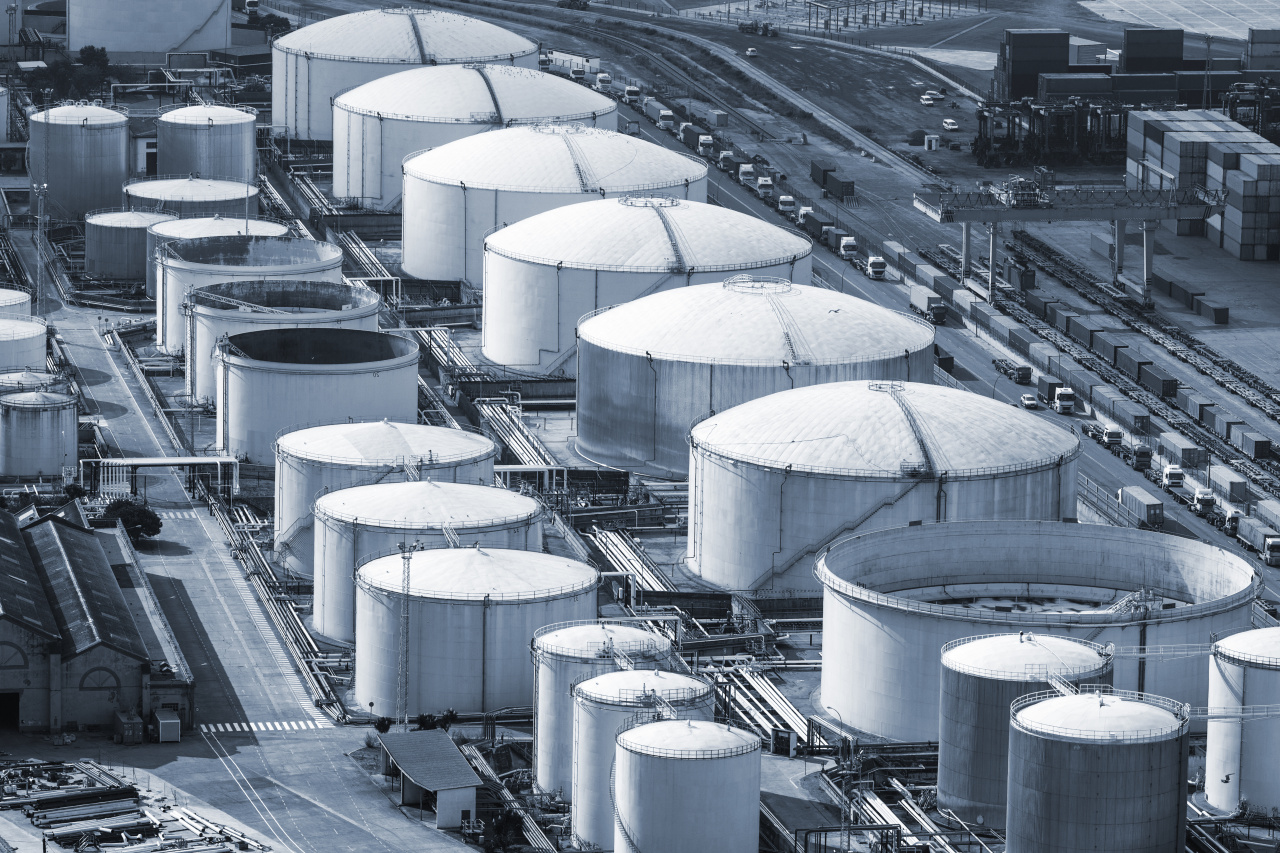With a dramatic drop in international oil prices and sluggish demand amid the novel coronavirus pandemic, oil refinery businesses in South Korea logged their worst-ever performances in the first quarter.
Aside from plummeting product prices devastating earnings, some of the companies have also been facing difficulties in managing their recently unwanted stockpiles.
Korea’s leading oil refinery and gas station operator SK Energy, in particular, is running out of storage space for crude oil due to low demand amid the pandemic, according to industry sources.
According to SK Energy, 90 percent of its storage capacity for crude oil was used up in April, leaving the refiner with only one option -- keeping the oil on the sea.
“If there is no place to unload the oil imports shipped from an oil tanker, refiners have to leave them inside the oil tanker floating on the sea indefinitely. In return, they have to pay the oil tanker tens of thousands of dollars per day,” a SK Energy official said.
And bad timing makes the situation worse for SK Energy compared to other refiners, as maintenance is due sometime in May or June.
Currently, SK Energy processes 840,000 barrels of crude oil every day, which equals some 24 million barrels a month. However, its total storage capacity, measured at 20 million barrels, actually falls to 12 million barrels ahead of periodical checkups that come around every five or 10 years.
This means that SK Energy has no choice but to keep their plants rolling for the time being, and to sell the product for whatever low prices it can get. It has, however, cut the rate of operations to 85 percent since March, from its usual 95 percent.
Other Korean refiners such as GS Caltex and Hyundai Oilbank were able to mitigate the demand shock, as their regular maintenance was scheduled in April. During the regular maintenance, those refiners could take a breather and halt their facilities. Hyundai Oilbank, for instance, lowered its operating rate to 30 percent while repairing its plant in Daesan, South Chungcheong Province, in April.
But contract issues meant that SK was unable to follow suit.
“It’s difficult to proceed with regular maintenance ahead of schedule because SK Energy still has to abide by supply contracts it signed with clients. Also, crude oil imports are coming in as scheduled, so if SK Energy begins the regular maintenance ahead of schedule, there is no way to process those imports,” the SK Energy official said.
The other refiner in Korea, S-Oil, is maintaining a 100 percent operating rate, though its regular maintenance is scheduled in the second quarter.
The differenciating factor for S-Oil is that Saudi Arabia’s state-run oil giant Saudi Aramco owns 63.4 percent stake. This in turn gives them more sources to sell the oil amidst the global oil price war.
“However, SK Energy can’t dump its petroleum products because it runs its business independently,” an industry source said.
Another industry source explained that though the oil price is low, Korean refiners can’t really stock it up in oil tanks because their business models are primarily based on processing the oil and selling petroleum products right away.
To support the situation, Korea National Oil Corp. has temporarily lowered fees for renting state oil reserve facilities to provide extra storage space for domestic refiners.
“Though KNOC can’t reveal exact figures on oil reserves as it’s a matter of national security, there is enough space to accommodate surplus oil from refiners,” a KNOC official said.
KNOC’s capacity for crude oil is 127.5 million barrels.
By Kim Byung-wook (
kbw@heraldcorp.com)






![[Herald Interview] 'Trump will use tariffs as first line of defense for American manufacturing'](http://res.heraldm.com/phpwas/restmb_idxmake.php?idx=644&simg=/content/image/2024/11/26/20241126050017_0.jpg)

![[Exclusive] Hyundai Mobis eyes closer ties with BYD](http://res.heraldm.com/phpwas/restmb_idxmake.php?idx=644&simg=/content/image/2024/11/25/20241125050044_0.jpg)